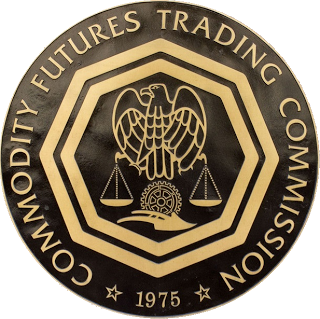← Back to Trade Talk Blog
Last week on Twitter, #TTtraining highlighted new TT platform training material targeted to both risk and system administrators.
Our improved User Setup application features robust account-based risk, an improved interface, and exchange-specific fields to provide administrators the tools they need to quickly get users set up and trading. For example, administrators can:
- Leverage exchange-specific terminology to quickly add Drop Copy FIX and exchange connections.
- Create, apply, and transfer product limits across users, accounts, and sub-accounts.
- Set up and apply maximum positions per contract.
- Apply credit limits to any user or account.
Below you’ll find the content we shared last week on Twitter. It includes all of the training videos, and it links directly to our training site.
Continue Reading →
Tags: Risk Management, Trade Execution
Last week, #PreviewTT showcased some of the risk management capabilities that are built into the TT platform.
TT couples familiar risk-management and user-administration functionality, including popular risk controls, with significant enhancements. For example:
- Administrators can customize their own account hierarchies to apply controls at any number of levels within those hierarchies or apply them directly to users.
- FCMs can provide firms with administrative access and give them control over the limits and settings on their sub-accounts without giving up control of aggregate risk limits.
- Trading firms can have their own administrative access to TT, with fine-grain control over the limits and settings on their own accounts and sub-accounts, even when positions get reset.
- Limits can be set per user as well as per account/sub-account. All limits work in conjunction with each other and must be approved before an order can be sent to the exchange.
And just like the trading application, the risk management and user administration apps are accessible via mobile devices.
Below you’ll find the content we shared last week on Twitter. It includes a video that highlights some of the key enhancements plus many product screenshots.
Starting tomorrow, we’ll talk about the TT platform architecture and benefits it delivers to our users. So keep following @Trading_Tech and #PreviewTT.
Continue Reading →
Tags: Risk Management, Trade Execution

The recent CFTC concept release provided a thorough, detailed summary of the current state of electronic trading and risk controls, and asked for public comments with a set of 124 specific questions. The document itself is a significant effort, intended to serve as an impartial platform to stimulate discussion of current and best practices, and has received more than two dozen responses from industry participants.
However, the process reminded me of the following story about looking upstream for solutions to problems. Please bear with me as I may have embellished the story (just a bit) from its original script.
A prosperous village straddling a scenic river had a problem rescuing people who had fallen off an upstream bridge into the river. The number of rescues seemed to increase daily, and the villagers were up in arms demanding help for their over-worked rescue crews.
The village elders held a series of meetings and drew up a detailed plan of action. They would establish trained monitoring patrols, equipped with a new, elaborate alarm system that would quickly alert authorities when someone was spotted in the river. They would beef up the rescue crews with the newest, specialized equipment available and also keep additional rescue teams on call.

The elders, being very wise, also looked for ways to address the problem upstream at the source. So at the bridge, they planned to build entry gates to restrict access. Travelers would have to register to cross the bridge and, as part of the process, would have to prove that they were qualified to cross. The registration assured that if by chance they did fall in and needed rescue, they could later be identified and fined. Crossings would be limited both in frequency and in total number per day. Once you started to cross, if you changed your mind and abruptly turned back, you had to wait before you could cross again. “We only want serious travelers to make these trips, not inexperienced sightseers who might just cause accidents.”
Continue Reading →
Tags: Risk Management
 |
| Image via Renjith Krishnan/FreeDigitalPhotos.net |
As someone who has been at TT for more than just a couple of years, I have seen various CTOs and product managers come and go. One common trend was always this: in the world of limited engineering resources and competing priorities, risk management features would typically take a back seat to the high-performance demands of the end user who was routing orders on TT’s platform. Historically, I guess that made some sense. At the end of the day, screen sales drove the business, and screen sales weren’t driven by the demands of the risk administrator.
TT Must Change with the Times
Only recently has the product management responsibility for risk and administration at TT become my own. So, now it’s my job to give the risk administrator a voice. Call it fate or bad luck (depending on the day), but this responsibility happened to coincide with some major risk management blow-ups resulting in quite a bit of regulatory reform. This, in turn, has resulted in rising compliance concerns and a major overhaul of how FCMs view risk management. So, the role I’m performing now looks very different than it would have five years ago at TT.
The conversation between TT and its customers has gone from common questions like these:
- Does your system do pre-trade risk checking per user?
- Can fat-finger limits be configured?
- Can I configure a daily loss limit?
To these:
- I’m concerned about high-frequency trading algorithms; how do I prevent a trader from flooding the market with orders?
- I have my own sophisticated system for evaluating risk exposure; how do I use that system to programmatically shut off trading at the user, account or account group level on your platform?
- We have a customer that hosts their own TT trading environment on their own servers; how can we ensure that we have exclusive risk management control over that trading environment?
So, What Has Changed?
There are some very real risk and compliance concerns that did not exist before—or if they existed, they have since been amplified. Proper risk management practices are more critical than ever.
What Else is Different?
For starters, TT has taken notice. What was once an afterthought has now become a major driver for us. We understand the importance of having multiple types and levels of risk control on our platform. Implementing these on our existing and next-generation platforms is something that sits atop our priority list. Risk management has found its voice and its place at TT.
Risk and Regulatory Challenges Faced by Large FCMs
As I meet with some of the larger FCMs who currently provide TT’s software to clients, I hear many of the same stories. Mainly, that TT is just one of many vendors that they offer. Managing risk across all platforms is a challenge, and they’ll gladly take any opportunity they can to consolidate the number of systems they have.
For us, the message is clear. We must make our software more flexible and easy to integrate with the FCMs’ existing risk management systems. They are looking for API functionality to get data in and out of TT’s platform. Pre-trade risk checking on TT isn’t valuable if it isn’t encompassing trades that are happening on other systems or on the floor. Because TT is just one of several systems, real risk management is happening outside of TT’s platform, often in the FCMs’ proprietary systems.
So, What is the Role of the Vendor?
Our response to this is to build flexible API functionality that provides a means for integrating TT’s software into other systems and processes. We’re doing that with products like TT API, and a brand new TT User Setup Risk API. And, when necessary, we must evolve our risk management features. We just launched, among other things, order throughput limits on our gateways, and we’re in the process of introducing new account and account group-based risk checking features into a platform that has historically been trader-based. Meanwhile, we will continue to develop new and compelling products, such as ADL™, to provide end users with advanced trading solutions.
Challenging times? Yes. But, for me, it creates an exciting opportunity to work closely with our clients to meet their changing needs. We either become flexible and adapt, or we must be replaced. If we can’t help to minimize their risks, then our trading features won’t matter. As of late, I’ve been inspired by the ability of our engineers to build platform-wide solutions into our current trading architecture. Look for more on this in future blog posts.
Tags: Risk Management


